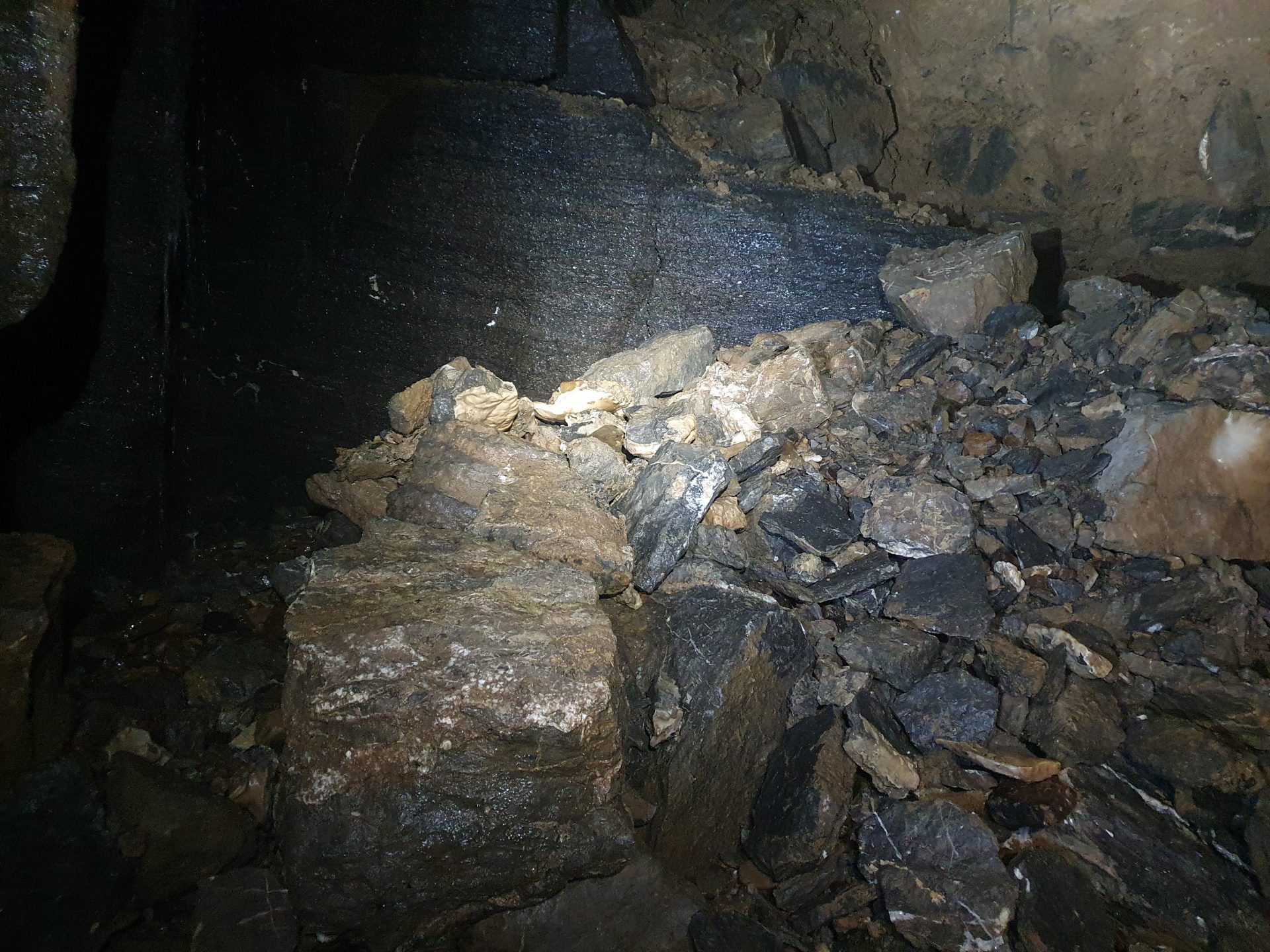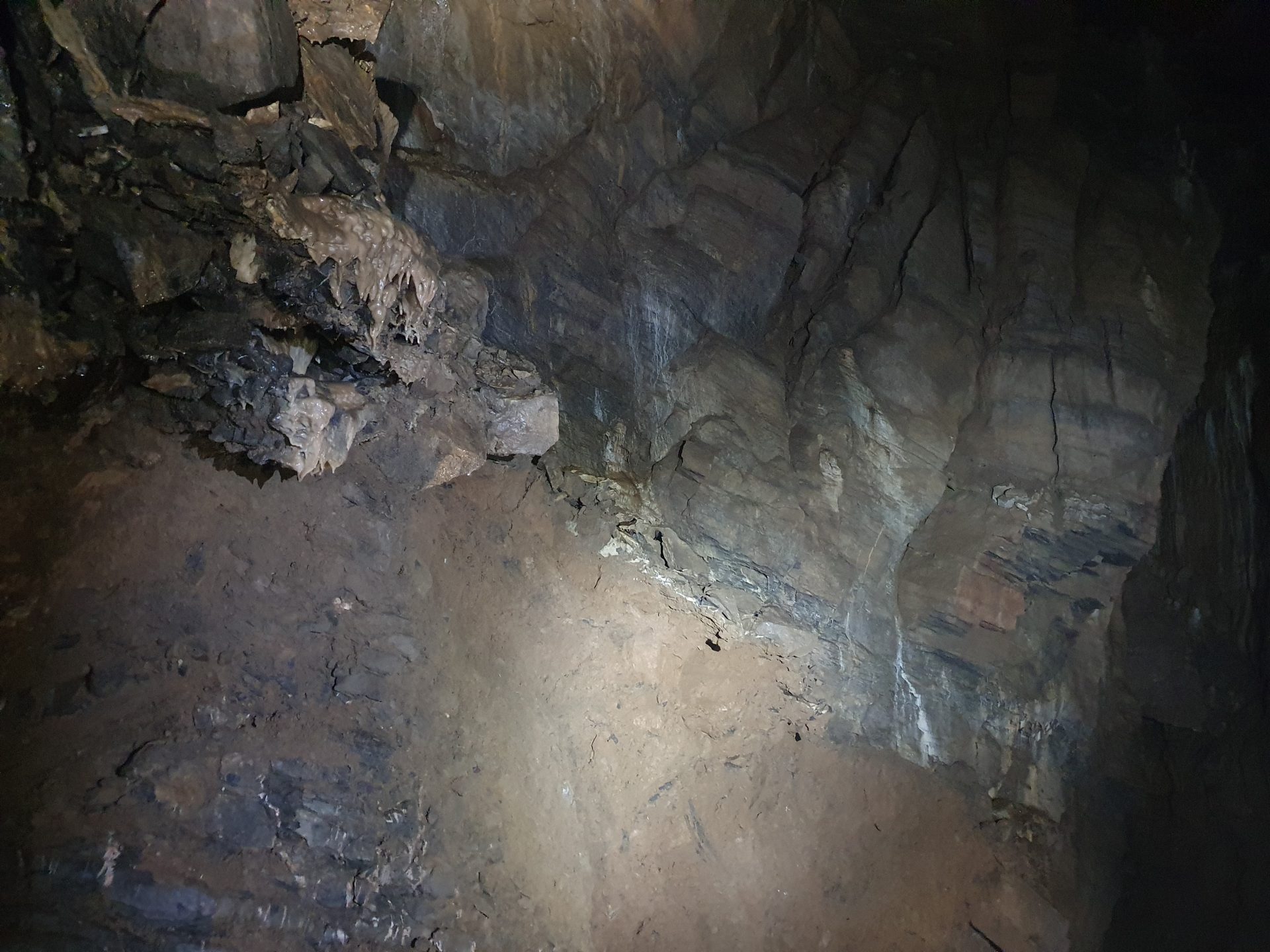
Following the earlier report of a rockfall in the area of the Waterfall Climb in G.B. Cavern, Mendip, the following information has been received from Charterhouse Caving Company Ltd.
Following the rockfall notified and publicised in early February, a further inspection trip was scheduled for 6 April, following the relaxation of covid restrictions. On 5th April, a report was received of a further fall. The inspection trip comprised Linda Wilson (Conservation Officer), Dave King and Graham Price (CCC Directors). A large area of the side of the passage above the big steps on the left hand side (when travelling into the cave, heading downstream) has come away, resulting in a massive, unstable talus cone of boulders, large rocks, smaller shattered rocks and mud that now completely covers the steps almost to the base of the ledge in the middle of the climb. Boulders and large rocks are spread over a wide area in the passage below the climb.

There is still a ridge of loosely calcited unstable rock high up on the wall above this area, so further falls cannot be ruled out. In addition, there has been some mud slumping on the right hand side of the passage when going downstream and this area might also be subject to some movement.
Dr Andy Farrant says: “The fall most probably results from the collapse of part of the periglacial gravelly solifluction deposits that form terraces and false floors throughout the cave. There is a significant deposit on the east side of the passage at the site of the collapse. These gravels were emplaced into the cave during the middle Devensian glaciation (c. 60-70 ka?). They were once more extensive, but have since been largely washed out by the cave stream, preserving local remnants on the sides of the passage. Where they are capped by speleothem calcite, the gravels are better cemented and are preserved as large overhanging shelves on the passage walls, locally undercut by the stream.”
A thorough inspection was carried out. As a result, warning tape has been placed across the passage above and below the climb, stating: “WARNING, LOOSE BOULDERS, DO NOT USE WATERFALL CLIMB, USE WHITE PASSAGE/LOOP ROUTE INSTEAD, CCC Ltd 6.4.21” These signs are laminated and attached to the tape with cable ties. A sign was also placed at the Bridge and one has been hung from the bar in the entrance. Please DO NOT cross these tapes to look at the fall.
As there is an alternative route to reach the lower part of the cave and Bat Passage, it was not felt necessary to close the cave as the area around the Waterfall climb can be bypassed in entirety, and the taping below the climb was placed some distance outside the furthest extent of the boulder fall. It will need several years of winter water conditions to even start to stabilise this area, so this part of the cave will need to remain off limits for the foreseeable future. The situation will be monitored. An attempt was made at fixed point photography so we have a baseline for the monitoring. As an aside, one of our original fixed photography points at the base of the lower ‘big step’ for SSSI monitoring is now completely covered by the talus cone. This is certainly the most noticeable change in the cave since formal monitoring began. Previously to this, the only difference in the photos was the door falling off one of the cars at the very top of the Gorge.
This rockfall is the most dramatic natural event in the cave since the 1968 floods opened Doline Three to the surface and spread mud and boulders throughout the streamway down to the end of the cave.

Please report any broken tape or missing warning signs so that these can be replaced. For information there is one sign in the blockhouse, one at the Bridge and three hanging from each section of tape above and below the affected area.
Correspondent: Charterhouse Caving Company Ltd
